[Editor’s Note: Louisville has made some pretty amazing achievements in its first 238 years—but it’s made a few blunders along the way, too. This week, we’re launching a new contributed mini-series documenting eight of the best and eight of the worst decisions, ideas, or projects that have profoundly affected the city. This list is by no means complete—and you may have strong opinions of your own about what should be on the best or worst lists. Share your thoughts in the comments section below. Or check out the complete Best/Worst list here.]
In 1964, Lincoln Income Life Insurance built the first major office in the suburbs at Breckenridge Lane and the Watterson Expressway. The resulting skyscraper is better known today as the Kaden Tower.
Completion of the structure signaled a significant shift in Louisville development‚ in effect serving as a billboard that the suburbs were open for business. Downtown was no longer the only place in which to build your company’s headquarters.
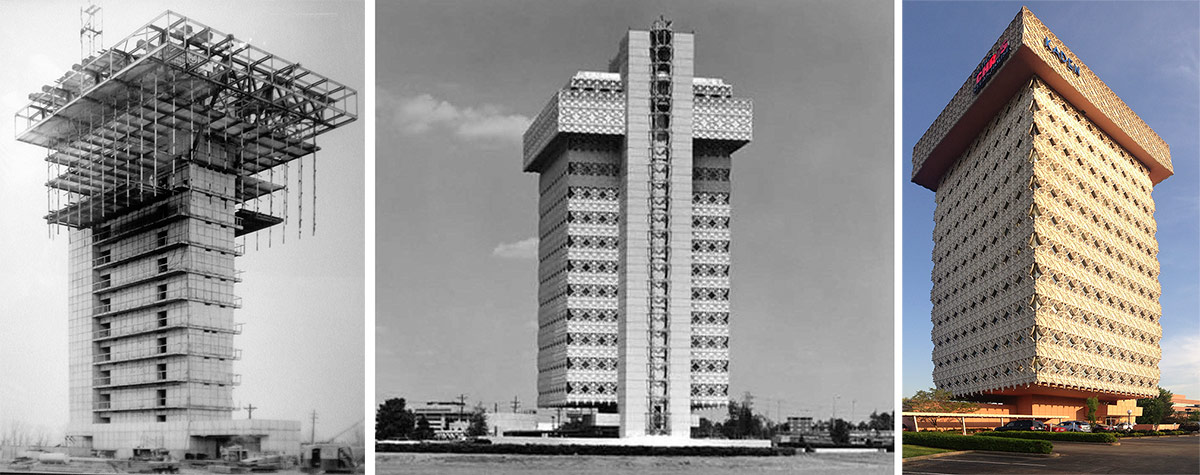
Besides locating hundreds of office staff in a remote site, away from other amenities like shops and restaurants, Lincoln built a world-class landmark designed by Taliesin Associates—the successor firm to the internationally acclaimed architect Frank Lloyd Wright.
The tower’s unique suspended-cable structural system flips construction upside down. Instead of building traditionally from the ground up, this feat of engineering suspends the tower’s floors down from an upper truss framework, a major technological innovation at the time.

Other distinctive design components include a glass elevator that offers a dramatic ride up the side of the tower, a top-floor observation deck, and a spectacular, lower-level auditorium that has a sweeping view of a surrounding outdoor pool.
And while notable and impressive, one can only wonder how much greater the impact might have been if the tower had been centrally located in downtown? It certainly would have strengthened the business district when it needed it the most.
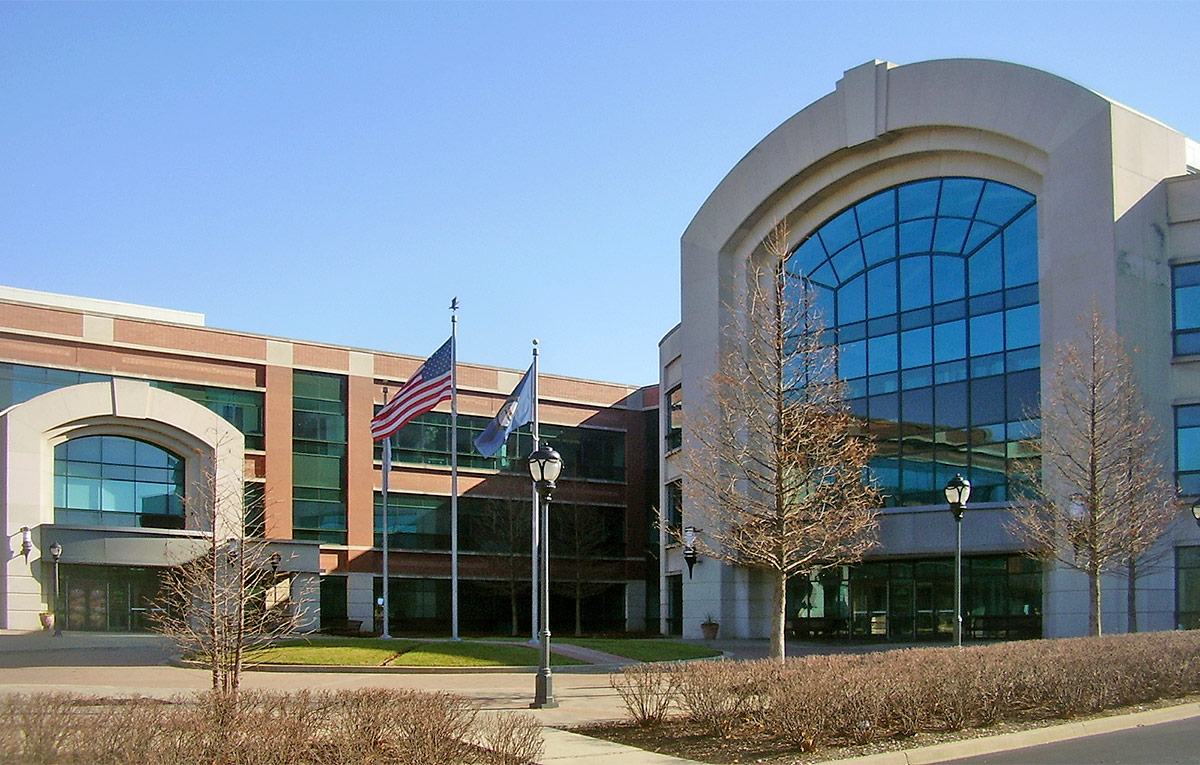
There are other prominent national and international headquarters in Louisville that are located in isolated, out-of-the-way places. Yum! Brands and KFC also chose to build alongside the Watterson, in a hard-to-find spot. And, to find the campus of Papa John’s Pizza, you’d need a GPS device.
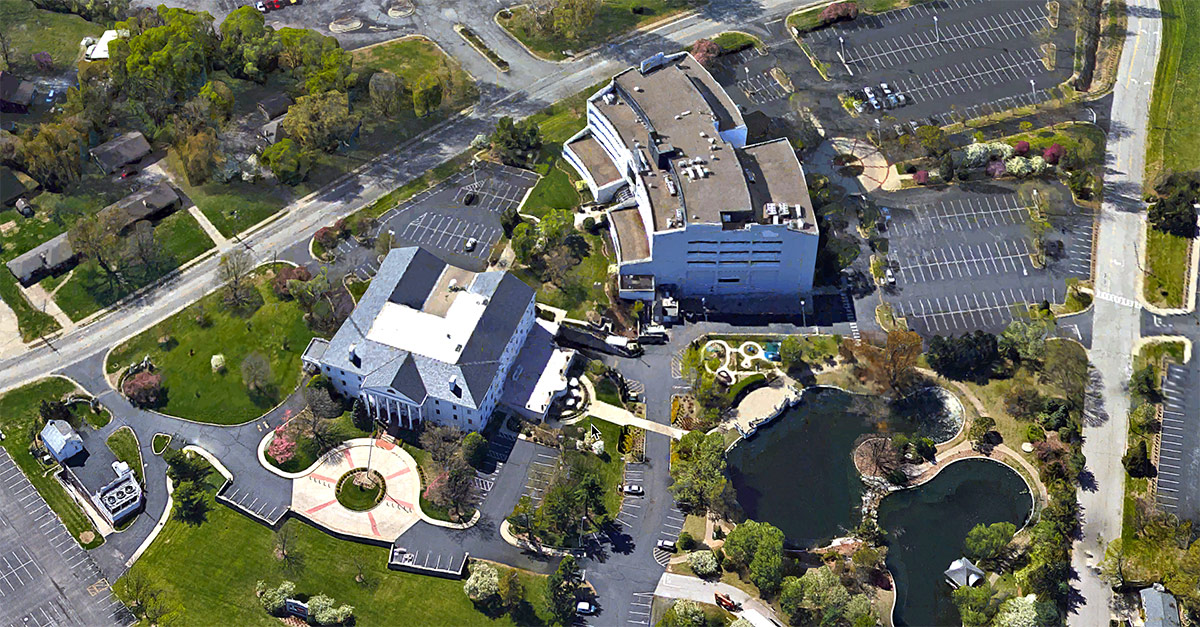
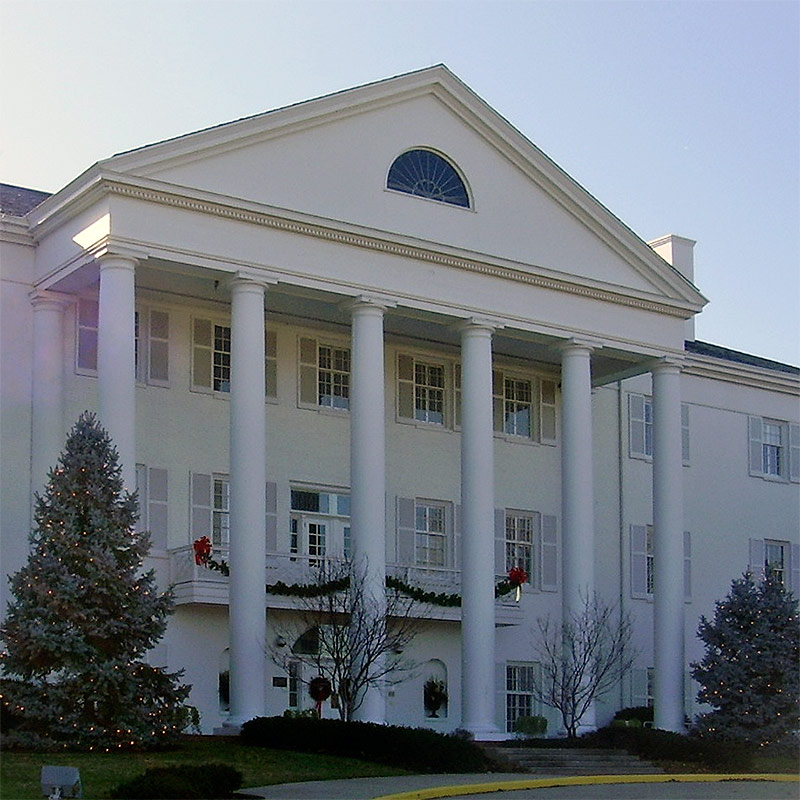
What if these two high-profile companies were located in a prominent address, serving as anchors in a walkable part of town? How many restaurants, shops, etc., would they have supported? While both have signature arenas and stadiums named after them, it is challenging to find one of their restaurants in the core city.
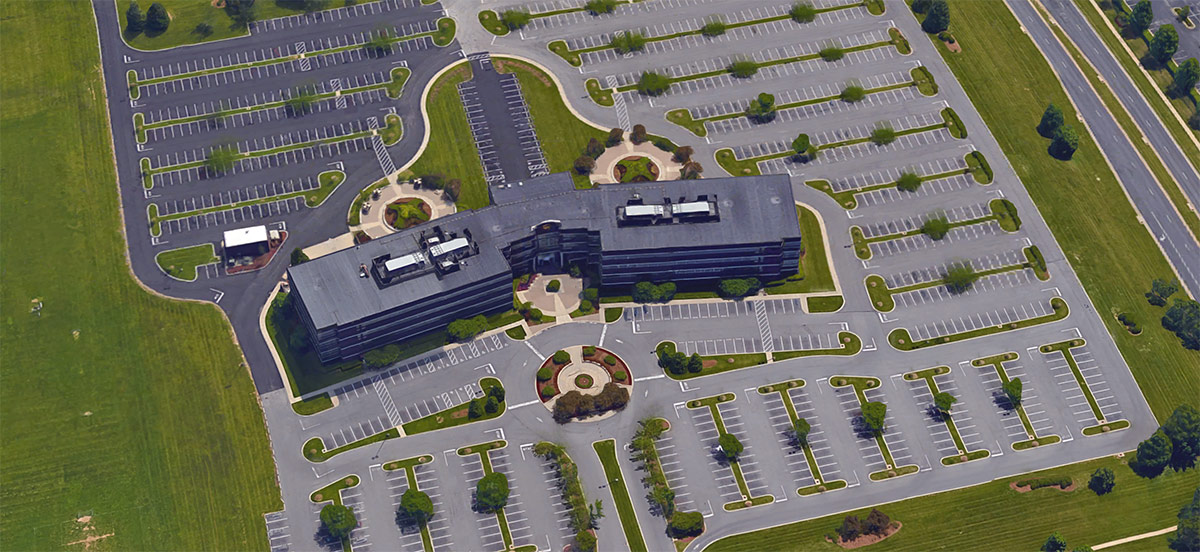
There are plenty of other examples of major companies located on the suburban and exurban periphery. UPS’ Air division is located in a generic office park off Hurstbourne Parkway. Churchill Downs is another, more recent, local giant that placed offices well outside of Downtown or even its Central Avenue track. One division of the company now occupies a shiny suburban office building on Hurstbourne Parkway near Shelbyville Road.
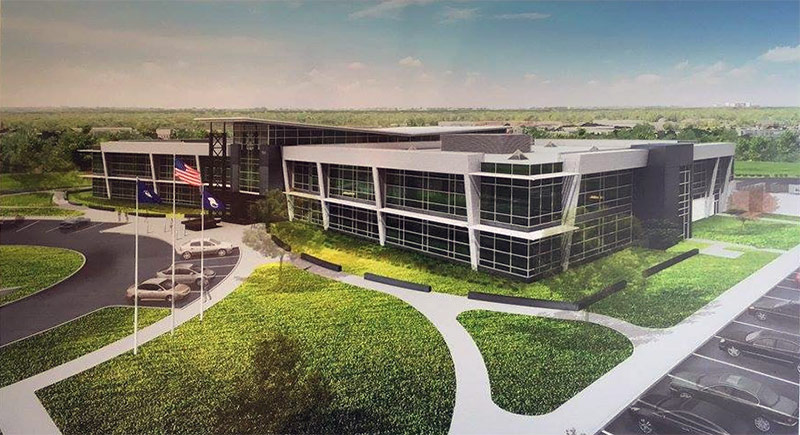
And others are still building new headquarters outside the city. In January, for example, Thorntons broke ground on its new HQ, termed a “Store Support Center,” on Old Henry Road in eastern Jefferson County. The nearly $30 million investment doubles the size of the company’s current suburban offices on Linn Station Road.
Fortunately, other corporations have invested heavily within the urban core over the years. Some of those include Humana, Kindred, and Aegon (formerly Capital Holding, which has since downsized and relocated).
At a time when corporations across the country embracing urban headquarters as a tool to attract the best talent, most notably with GE’s move from the Connecticut suburbs to downtown Boston, what would Louisville look like if we had a centralized corporate structure?
The synergy and density of multiple headquarters in downtown could create an environment of growth and vitality for all of Louisville, which in turn leads to a better place to live and call home.
[Top image of the Kaden Tower courtesy Google.]

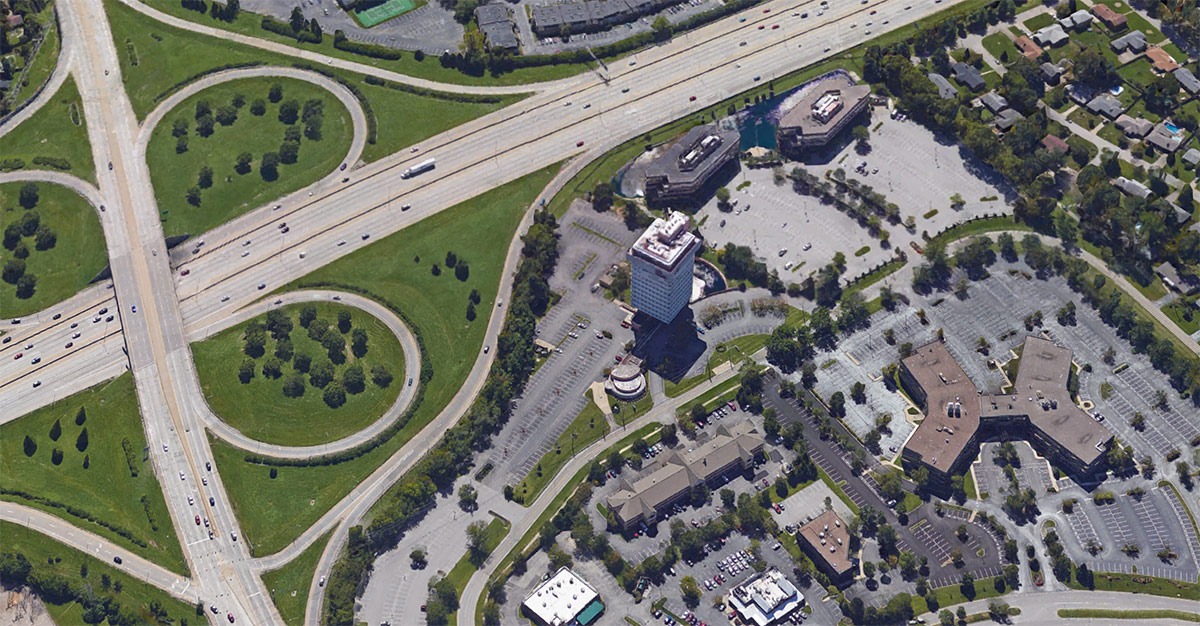

As a recruiter, I will note that it is much more difficult to attract people to work downtown than elsewhere. I can’t imagine how bad downtown traffic would be if all the facilities you mentioned were built downtown. Sure, in an ideal world, there would have been transportation solutions added over time…. But there haven’t been, so we can’t really expect that there would have been.
Additionally, many of the companies that you mentioned have begun expanding office space away from downtown, in order to reduce operational costs.
It’s easy to dream about how great it might be if everyone were to invest in and work downtown. The reality is that it’s much more costly, and many would-be employees have absolutely no interest in making that commute, or sacrificing several extra hours per week of their lives sitting in traffic.
It’s certainly worth considering and discussing how we might go about continuing to invest in and develop the downtown area…. But let’s not be so quick to judge those who opt not to.
This is a stupid story. Neither of these first two would work downtown.
But Tim, the thing that you forget, is that by having all the businesses out on the ring roads, the traffic follows. I can’t say how many times I have been in major cities during rush hour and the traffic is worse in the opposite direction (IE from downtown to the burbs in the morning) than if those businesses had located in the downtown. IE, think of Google and San Francisco. The employees don’t want to live where the offices are, so Google has a bus system to pick them up from San Francisco proper. Not the burbs. Granted, Louisville is behind in the urban core development that a lot of our competitors are.
To the recruiter above, there are at least some of us who would be much harder to recruit to jobs outside the downtown area. Have the companies (downtown?) for whom you recruit considered offering TARC passes? Mine does, and it enables my family to save the money we would otherwise spend on a second car. I commute by bus from the not-too-far-out east end and I spend my pretty modest commute time reading for pleasure. I know I am not typical for around here, but I think that is a matter of culture rather than practicality. While it’s true that some folks do not live near a bus route, a great, great many who do don’t even know it.
I know plenty of people who are miserable having to commute from the lively areas they want to live in close to downtown down to Hurstbourne Lane, where the traffic is just miserable and their are zero alternative routes to avoid it. Don’t people want to be able to walk to a restaurant? Walk to have a drink after work? Or is society so atomized no that the people just drive to the office alone, sit in their cube alone, eat in the breakroom alone and never see the sun, then drive home alone and finish off the rest of the night doing the same thing they did all day: sitting on the computer. What a sad lonely world we’ve created.
Tim, there’s also the fact that the more active downtown is, the more people would be happy living downtown. There would be more pressure for better transit and more pressure on downtown living. Also, as mentioned above, more people happily commuting from Louisville’s downtown-centric “original suburbs” like the Highlands, Germantown/Smoketown, Old Louisville, Jeffersonville, Clarksville, and New Albany.
A prime example of cause and effect. The cause is the LDC and the burbs is the effect. I can understand from a business stand point, why rent downtown when you can build, whatever you want, in the burbs? No preservation pushback, out growing your downtown building and limited growth potential. These code and preservation issues have pushed companies to Indiana, other counties or non-consideration for the city. At the end of the day, it’s being cost effective for the business. Why spend $100k to fight groups and spend months doing so when companies can get approvals and build then open for business in the same amount of time? It’s time to change the code. Some things are worth saving (Whiskey Row and not every shotgun house), but if the reward is greater…